- Books Name
- CBSE Class 7 Social Science Book
- Publication
- Param Publication
- Course
- CBSE Class 7
- Subject
- Social Science
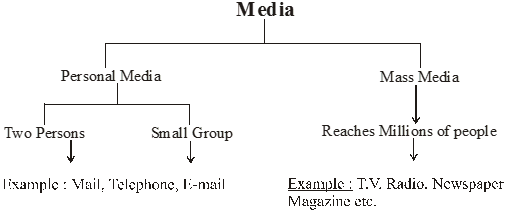
* Introduction
(i) The focus in ‘Understanding Media’ is on explaining the strong links between media and technology and media and big business.
(ii) It explains how the media ‘sets the agenda’ through influencing our perception of issues worth devoting time and attention to, and issues that are neglected or overridden.
(iii) In ‘Understanding Advertising’ we have focused both on critically analysing how advertising strategies influence customers, as well as demonstrating what goes into the making of an advertisement.
(iv) The significance of a ‘brand’ and the need to promote the uniqueness of a product is a key part of advertising. The chapter identifies the mechanisms that advertisements use to appeal to the consumer, and explains how these are powerfully linked to the consumer’s self-image.
Everything ranging from the stall at the local fair to the programme that you see on TV can be called media.
Media is the plural form of the word ‘medium’ and it describes the various ways through which we communicate in society.
* Media and Technology
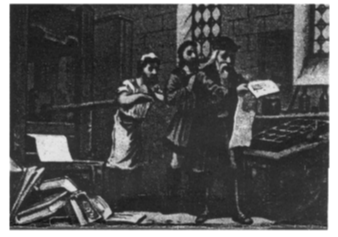
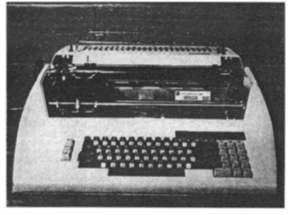
1. Newspapers, television and radio can reach millions of people because they use certain technologies.
2. (a) Changing technology, or machines, and making technology more modern, helps media to reach more people
(b) It also improves the quality of sound and the images that we see.
(c) It also changes the ways in which we think about our lives.
3. (a) Television has enabled us to think of ourselves as members of a larger global world.
(b) Television images travel huge distances through satellites and cables.
(c) This allows us to view news and entertainment channel from other parts of the world.
(d) Most of the cartoons that you see on television are mostly from Japan or the United States.
* Media and Money
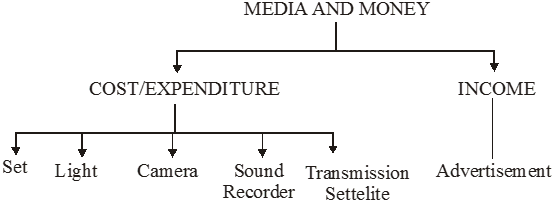
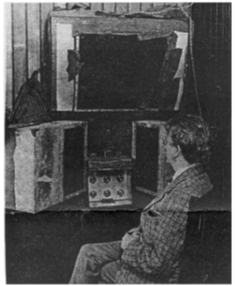
the Royal Institute, his invention, the ‘televisor’ an early television.
(A) The different technologies that mass media use are expensive. The TV studio in which the newsreader sits-it has lights, cameras, sound recorders, transmission satellites, etc., all of which cost a lot of money.
(B) Due to these costs, the mass media needs a great deal of money to do its work. As a result, most television channels and newspapers are part of big business houses.
(C) Mass media is constantly thinking of ways to make money. One way in which the mass media earns money is by advertising different things like cars, chocolates, clothes, mobile phones, etc.
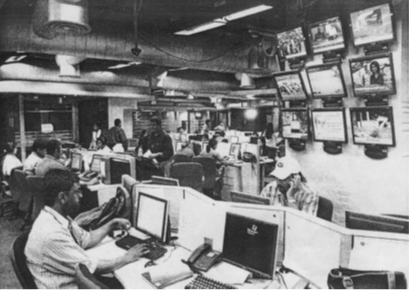
depending on the popularity of the channel
* Media and Democracy
1. In a democracy, the media plays a very important role in providing news and discussing events taking place in the country and the world.
(a) Writing letters to the concerned minister.
(b) Organising a public protest.
(c) Starting a signature campaign.
(d) Asking the government to re-think its programme, etc.
2. People reaction on news & stories of media.
3. A balanced report is one that discusses all points of view of a particular story and then leaves it to the readers to make up their minds. Writing a balanced report, however, depends on the media being independent.
4. An independent media is important in a democracy. It is on the basis of the information that the media provides that we take action as citizens, so it is important that this information is reliable and not biased. The reality is that media is far from independent. This is mainly because of these reasons:
(a) The control that the government has on the media. When the government prevents either a news item, or scenes from a movie, or the lyrics of a song from being shared with the larger public, this is referred to as censorship.
(b) Persons who research the media have said that this happens because business houses control the media. At times, it is in the interest of these businesses to focus on only one side of the story.
(c) Media’s continual need for money and its links to advertising means that it becomes difficult for media to be reporting against people who give them advertisements.
(d) The media also tends to focus on a particular aspect of a story because they believe this makes the story interesting and to increase public support for an issue, they often do this by focusing on one side of a story.
* Setting Agendas
1. The media also plays an important role in deciding what stories to focus on, and therefore, decides on what is newsworthy.
2. By focusing on particular issues, the media influences our thoughts, feelings and actions, and brings those issues to our attention.
3. Due to the significant influence it plays in our lives and in shaping our thoughts, it is commonly said that the media ‘sets the agenda’.
For example
Very recently, the media drew our attention to alarming levels of pesticides in cola drinks. They published reports that indicated the high level of pesticides and, thus, made us aware of the need to regularly monitor these colas according to international quality and safety standards.
4. There are several instances when the media fails to focus on issues that are significant in our lives. For example, drinking water is a major problem in the country. Every year, thousands of people suffer and die because they do not get safe drinking water. However, we seldom find the media discussing this issue.
5. As citizens of a democracy, the media has a very important role to play in our lives because it is through the media that we hear about issues related.
6. Local media
A newspaper called Khabar Lahriya which is a fortnightly that is run by eight Dalit women in Chitrakoot district in Uttar Pradesh. Written in the local language, Bundeii, this eight-page newspaper reports on Dalit issues and cases of violence against women and political corruption. The newspaper reaches farmers, shopkeepers, panchayat members, school teachers and women who have recently learnt to read and write to the working of the government. The media decides what to focus on and in this way it ‘sets the agenda’.

 Param Publication
Param Publication
